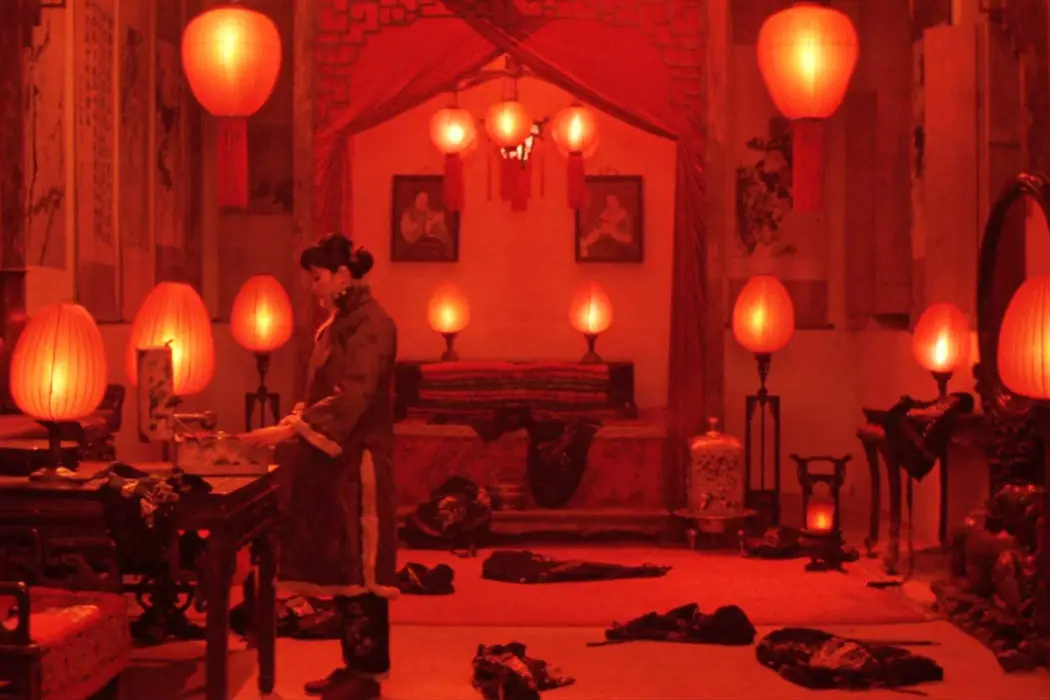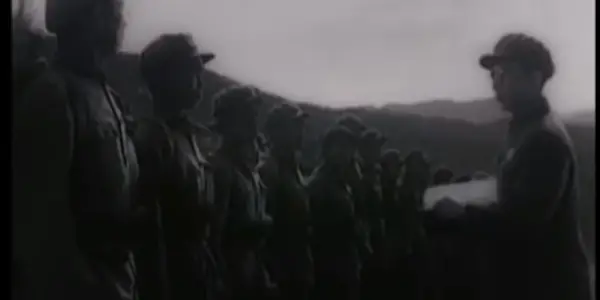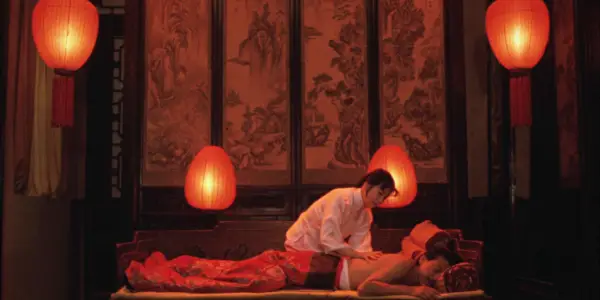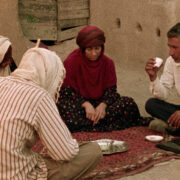The Beginner’s Guide: Fifth Generation Chinese Cinema

Zoe Crombie is a Film Studies student from Lancaster University,…
While ‘Fifth Generation Chinese Cinema’ technically refers to the films produced by the fifth generation of graduates from the Beijing Film Academy following Mao Zedong‘s ‘Cultural Revolution,’ the connotations of the phrase are far deeper in meaning than simply referring to a group of people. A huge break from the Chinese cinema that came before it, this movement has associations with experimentation, allegory and a sense of creative freedom following years of oppression.
Communist Filmmaking
In the 1950s and early 1960s, China had developed a state-sanctioned cinematic tradition of social realism. This was in line with Marxist ideals established in the 1920s by filmmakers like Dziga Vertov in his Man With a Movie Camera; some filmmakers even being sent to Moscow to learn of these techniques. These films valued form over content and a representation of the ‘real world’ aligned to Communist ideals, always bringing to the viewer’s attention that they are watching a constructed fantasy and not a bourgeois trick with the use of montage and non-conventional editing.

Inevitably, movies like these were used as propaganda for the Communist Party, promoting Nationalist values and focusing on mostly peasant or soldier protagonists, or depicting wars being heroically won by Chinese Communist forces. Notable examples of these films include Wang Bin‘s Bridge and Lin Shan‘s Shangganling, both of which sought to emphasise the endurance and courage of the Communist soldiers.
Cultural Revolution
Curiously unbeknown to many white Westerners of my age (19), Mao‘s so-called ‘Cultural Revolution’ officially began in 1966, essentially as a method of utilising the populace to overthrow his political enemies and anyone who stood against the values of the Communist Party. Regarding cinema, the Revolution involved banning the vast majority of films that came before, both Chinese and otherwise, and producing very few more during the decade of the Cultural Revolution (to 1976). As for the previously active filmmakers, many were persecuted for their supposedly Capitalist leanings by the Red Guard (groups of youths violently loyal to Mao), such as directors Zheng Junli and Cai Chusheng, who like other artists and intellectuals were tortured and killed.
These groups in particular were targeted because of their ability to place opposing views into the public conscious, with all arts to an extent holding the purpose of challenging traditional worldviews and the contemporary government. Any kind of creative initiative in the world of cinema could have cultivated more opposition for Mao, and was therefore banned.
Beginnings of the Movement
The most well known and well-regarded directors of the movement are Chen Kaige and Zhang Yimou, who graduated from the Beijing Film Academy — China’s only film school at the time — in 1982, following its reopening after the end of the Revolution in 1978. Prior to attending the Academy, both had been sent to partake in hard labour during the infamous ‘Down to the Countryside‘ initiative, forcing them to live in relative poverty with little to no access to any culture, domestic or overseas. During their studies, they and others had been shown previously banned foreign films for the first time, including experimental French New Wave titles by Jean Luc Godard and Francois Truffaut, which may have encouraged a sense of auteur filmmaking identifiable in their works. This, alongside a unanimous desire for a new form of Chinese cinema, led to the creativity and vivid visual expression the movement is known for today.
Visual Experiments
The most immediately noticeable aspect of the generic Fifth Generation style is the meticulous framing in the cinematography of each film, particularly those where Zhang is either director or director of photography. This is particularly prevalent in his 1991 film Raise the Red Lantern, set in the 1920s, in which the tight framing of protagonist Songlian during her new role as a concubine gives a strong visual sense of her entrapment and suffering. The way the location of the Qiao Family compound is shot never truly allows the viewer a sense of spatial awareness, presenting the mansion as a labyrinth Songlian and the other concubines are lost inside.

The use of a rich, elaborate and symbolic mise-en-scene also sets the movement apart from the Chinese cinema that came prior. The titular vibrant red, glowing lanterns from Zhang’s film have been interpreted by critics as a symbol of women’s oppression under the Communist rule. Zhang’s previous film, Ju Dou, is set in a dye factory — the use of technicolour beautifully enhancing the reds and yellows in the backdrop of the doomed romance, as well as helping to visually represent the couple’s forbidden sexual liaisons in the narrative.
Aside from the more stylised elements, Fifth Generation films have also become known for their sprawling landscape shots and sense of scale. Kaige‘s Yellow Earth, one of the earliest works from the movement, utilises a dry, rural mountainous area of Shaanxi to suggest the loneliness and suffering of peasants, the illusion of freedom they hold under Communist rule and how powerless they are as individuals against the oppressive, inescapable government.
Allegory
Although any audience can appreciate the films on an aesthetic level for the meticulous detail in the costuming or the beauty of the landscapes, it can be argued that a more educated audience, or just one aware of the political strife in China, would also pick up on the allegory present in many Fifth Generation films. On a its surface, Raise the Red Lantern is about the petty fights between concubines trying to win the favour of a cold master, but it can be interpreted as a criticism of Mao or simply of dictatorships as a whole.

The fact that many of Zhang’s films feature an older controlling male antagonist (Ju Dou, Red Sorghum) suggests a criticism of both patriarchal dictatorships and of the violent control of older generations. However, Zhang’s more recent work such as Hero and Curse of the Golden Flower, which each imply a level of sympathy for patriarchal, dictator-like figures, has drawn controversy for suggesting almost the reverse political message of his earlier films, though has still been appreciated on the level of visual appeal. Regardless, it can be said that the difficult pasts of each of the Fifth Generation filmmakers have led to political commentary in their work, whether intentional or not.
Final Thoughts
Despite many of the films of the movement being banned by the Communist government of China, the reactionary and intensely visual elements of the Fifth Generation filmmakers’ works continue to fascinate and influence directors in the West today. Quentin Tarantino has stated that Zhang is one of his all-time favourite directors, and films like Zhang’s Red Sorghum and Kaige‘s Farewell My Concubine performed extremely well in the European festival circuit at the Berlin Film Festival and Cannes Film Festival respectively, winning the main awards for each.
What do you think are the most significant films of the movement? Who is your favourite director of the Fifth Generation graduates? Feel free to discuss in the comments!
Does content like this matter to you?
Become a Member and support film journalism. Unlock access to all of Film Inquiry`s great articles. Join a community of like-minded readers who are passionate about cinema - get access to our private members Network, give back to independent filmmakers, and more.
Zoe Crombie is a Film Studies student from Lancaster University, who has been writing for Film Inquiry since May 2018 as well as at her own site Obsess Reviews. She is a big fan of Studio Ghibli and The Marx Brothers, but is willing to watch anything and everything.













